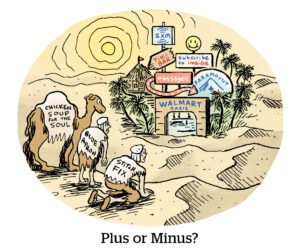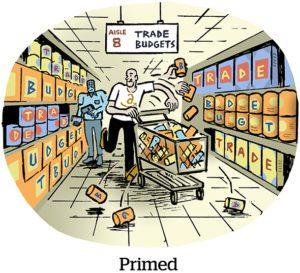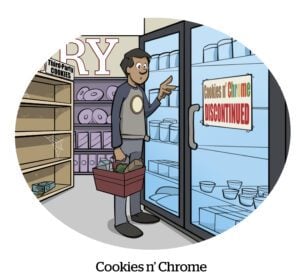Here’s today’s AdExchanger.com news round-up… Want it by email? Sign up here.
Rare Wares
TV inventory is on track to become an even scarcer resource.
US television (linear and streaming combined) will likely lose almost a quarter of its ad inventory volume over the next four years, according to media prognosticator Brian Wieser, writing at Madison and Wall.
Pay TV subscribers continue to swap out cable subscriptions for streaming. But “no matter how much streaming grows, it can never make up for lost linear ad inventory” because light ad loads are a permanent feature of on-demand streaming, Wieser predicts.
To put that in perspective, commercials make up roughly 3% of viewing time for on-demand streaming compared with 20% for linear content on average (including via digital programming distributors).
People watching movies and shows on-demand have a lower tolerance for ads, which explains why they prefer ad-free options (despite Netflix’s and Disney’s best efforts).
So, what should advertisers expect?
More scarcity suggests TV ads will increase in price (if not value), and Wieser says pricier avails should also make advertisers more selective about what they pay for. In practice, that means marketers will focus more on advanced audiences than basic age or gender demos.
The Best Paid Plans
The ad industry’s thirst for scale and the current crackdown on made-for-advertising (MFA) sites are at odds and creating a problem for minority-owned publishers.
Black-owned publications are worried they’ll be labeled as MFA because they often buy traffic as a way to meet the scale expectations of their advertisers, Digiday reports.
The uptick in buy-side DEI initiatives over the past few years has turned on the spigot for some Black-owned publishers through more guaranteed ad buys. But these deals require publishers to deliver an agreed-upon volume of ad impressions. Smaller and more niche outlets often have trouble fulfilling these requirements.
In general, publishers of all sizes are resorting to buying traffic as they see fewer referrals from social networks.
But Facebook paid traffic is the biggest MFA channel by far, according to Jounce Media President Chris Kane, which is a main reason why a high rate of paid traffic is a signifier used to flag MFA by Jounce, the ANA, the 4A’s and others.
Advertisers don’t want to unknowingly spend reach extension campaigns when their intention was to buy inventory on an owned-and-operated site.
Guess publishers are damned if they do buy traffic – and damned if they don’t.
The Growth Mindset
Two themes that emerged at Advertising Week – retail media and CTV – pose similar opportunities and dilemmas.
On one hand, the macro-growth picture is good. Retail media and CTV ad budgets are forecast to grow for a while. This isn’t the blockchain/Web3 boom and bust.
But budgets are still tied up with the few largest players, write Brian Morrissey and Mike Shields at The Rebooting, and retail media isn’t winning from other categories the way Google, Meta and Amazon soak ad budgets from TV, newspapers, magazines and everything in between.
Tech vendors have their best shot with smaller chains like Hy-Vee, 7-11 and Giant Eagle (their retail media networks are RedMedia, Gulp Media and Leap Media, respectively), which can bring some scale.
But will dozens of retail media networks stand the test of time?
A similar problem crops up in CTV. There’s pressure from all corners to launch free, ad-supported streaming TV (FAST) networks simply to capture all that growth and interest.
But, ummm … is anybody watching FAST channels?
“The challenge of resources and where to place bets will be a recurring theme of the more-with-less era,” write Morrissey and Shields.
But Wait, There’s More!
WPP merges Wunderman Thompson and VMLY&R, dubbing the new thing just VML. [WSJ]
Netflix will give live programming another go. [Variety]
Society Brands, an Amazon brand operator and marketing business, raises $25 million. [release]
The Amazon Web Services ID resolution product integrates with LiveRamp, TransUnion and Unified ID 2.0. [release]
AI is becoming a Band-Aid for bad and broken tech industry design choices. [Scientific American]
GroupM struck a deal with Amazon to use influencer content in Amazon Ads. [The Drum]
You’re Hired!
GroupM’s Wavemaker poaches UM Worldwide’s Kristin Jones as global account lead for Colgate-Palmolive. [MediaPost]
“Sustainable” social media app WeAre8 hires Ben Rabunski as SVP of US sales. [release]
















